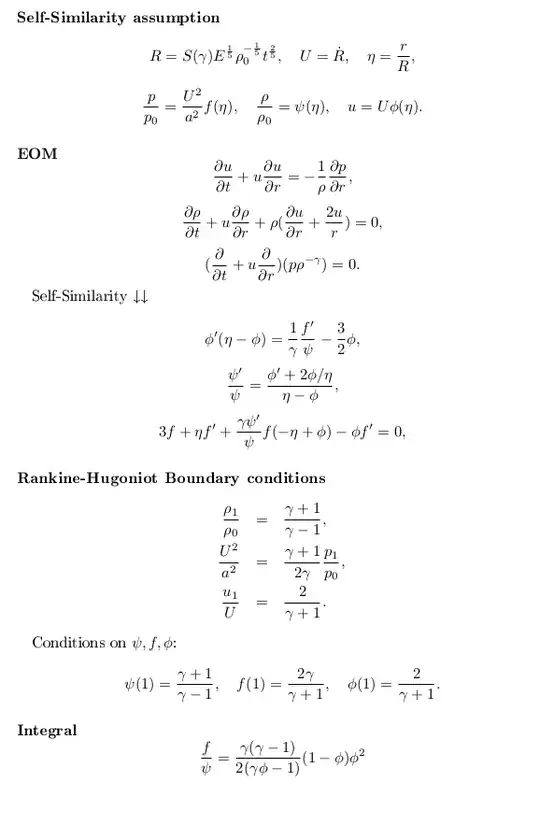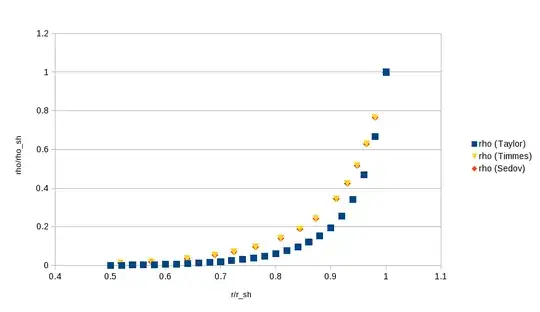I'm studying the Taylor-Sedov self-similar solution to the problem of a strong explosion in a homogenoeus atmosphere. The problem is discussed in Landau & Lifschitz VI (in the 2nd edition it's §106). In these notes there's a reproduction of Landau's derivation, that solves analitically the problem (I believe that the original solution is due to Sedov).
In a nutshell ($R$ is the radius of the shock, $r$ is the radial coordinate, the quantities with $_0$ are the unperturbed quantities in front of the shock).

The last integral is derived by Landau and in the notes above by energetical considerations (that is, by requiring that the energy within a radius $\eta R$ with $\eta \in (0,1)$ stays constant in time).
Now, the EDOs above for $f,\phi,\psi$ were solved numerically by G.I. Taylor in 1941. See here. I'm comparing the analytical solution with Taylor's numerical solution, and looking at the table of values at page 164, I realized that the integral above, is far from conserved. The identity is satisfied at $\eta = 1$ but for $\eta = 0.5$ the difference beetween LHS and RHS is about $62$!
I am confused: is the above integral an additional constraint, following from physical considerations, which allows to solve analitically the equations of motion? I believe that it isn't so, the solution to this problem should be unique and so has to satisfy the relation.
Thanks in advance for any help.
For clarity, in Landau's book the adimensionalization is done in a slitghly different manner: $$u=\dfrac{2r}{5t}V=U\cdot V,\quad \rho = \rho _0 G,\quad c^2=\gamma\dfrac {p}{\rho}=\dfrac{4r^2}{25t^2}Z=U^2Z, $$ and the integral writes as: $$Z=\dfrac{\gamma(\gamma-1)(1-V)V^2}{2(\gamma V-1)}.$$ Going back to Taylor's variables, one finds: $$V=\phi,\quad G=\psi,\quad Z=f/\psi$$ and so the above relation.
UPDATE
I had made a silly mistake in the conversion from $Z,V,G$ to $\phi, f,\psi$ coordinates. The correct relations are: $$\eta ^2 Z = f/\psi,\qquad\eta V = \phi.$$ With these substitutions, the integral reads: $$f=\dfrac{\gamma(\gamma-1)}{2}\dfrac{\eta-\phi}{\gamma \phi -\eta}\phi ^2 \psi$$ and is perfectly conserved along my numerical solution.
